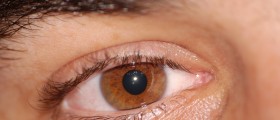
A person who lacks visual perception is considered to be blind. In all cases of blindness the main factors that caused it to occur are either physiological or neurological. There is not one type or degree of blindness but there are various forms of blindness and scales that have been developed in order for the extent of vision loss to be determined. A person who is diagnosed with total blindness lacks form and visual light perception completely. However, blindness is also being used for the description of severe visual impairment as well.
Causes of Blindness
People need to know that there are a lot of causes which lead to blindness. Certain causes occur a lot more than others and these include various diseases. Among such diseases that lead to blindness, the most commonly reported are cataract, glaucoma, age-related macular degeneration, corneal opacity, diabetic retinopathy and childhood blindness.
According to experts, people who live in developing countries are more likely to end up suffering from blindness than people who live in already developed countries. According to data, cataracts are the main cause of blindness all over the world and there are more than 22 million cases of blindness caused by cataracts. In the seconds spot of causes of blindness is glaucoma. According to available data, glaucoma is blamed for blindness in more than 6 million cases.
On the other hand, trachoma used to be one of the leading causes of blindness but the incidence of trachoma has drastically dropped in the last decade. Ten years ago there were 6 million cases of blindness caused by trachoma. Nowadays the number is 1.3 million.
Another common cause of blindness is xerophthalmia. It affects some 5 million children every year. Out of this number, half a million children develop active corneal involvement and 250,000 children end up blind.
Visual impairment is more common in developing countries than it is in the rest of the world. The main reason why that is so, is because the developing countries do not have the means to properly prevent or treat conditions which lead to blindness. In developing countries visual impairment affects mostly people older than 60 years of age. On the other hand, the kids in these countries are far more prone to suffering from blinding diseases.
Cataracts and water-borne parasites affect people in both developing countries and the rest of the world. However, these conditions can be treated with proper treatment but since treatment options are not available in developing countries, people basically end up blind. In developed countries the leading causes of blindness are considered to be glaucoma, age-related macular degeneration and diabetic retinopathy because cataracts can be cured and parasitic diseases do not occur that often.
Apart from diseases, blindness can occur due to eye abnormalities and injuries. Monocular blindness is pretty common among people younger than 30 years of age and the leading cause of that condition are eye injuries. Optic nerve hypoplasia is one of the leading abnormalities which lead to decreased visual acuity due to the fact that the nerve bundle is affected. People should also be aware that even if they do not suffer from eye injury, they may still go blind if the occipital lobe of the brain gets damaged.
Genetic defects can also lead to blindness in people. For instance, people with albinism often suffer from visual loss of different degree.
Even though it is not that common, blindness can also occur due to intake of certain chemicals or poisoning. One of the best known chemicals which lead to blindness is methanol. Management Options
There was a certain study conducted in the year of 2008 that tried the effects of gene therapy to restore the sight of people who inherited a certain type of blindness called Leber Congenital Amaurosis or LCA. This blindness affects the light receptors of the retina when people are still young and gets worse over time until it leads to complete blindness when people reach the age of 30. The researchers used a common cold virus to deliver a normal version of the gene and all three participants had good results. These results encouraged other scientists to research further.
Most people who suffer from serious visual impairment can move on their own but not without the help of certain tools. Knowing certain techniques helps as well. Blind people will learn from orientation and mobility specialists how they can move safely. It is very important that people get familiar with the environment.
White cane with a red tip is most commonly used as a helping tool by blind people. Guide dogs are also there for the blind people. It is not uncommon for blind people to use GPS as a mobility aid. Statistical Relevant Data
According to the data, in the year 2002 there were 161 million people who suffered from impaired vision all over the world. That number is the some 2.6% of the entire population. Out of all these people, some 2% or 124 million suffered from low vision while 0.6% or 37 million were actually blind.

















Your thoughts on this
Loading...